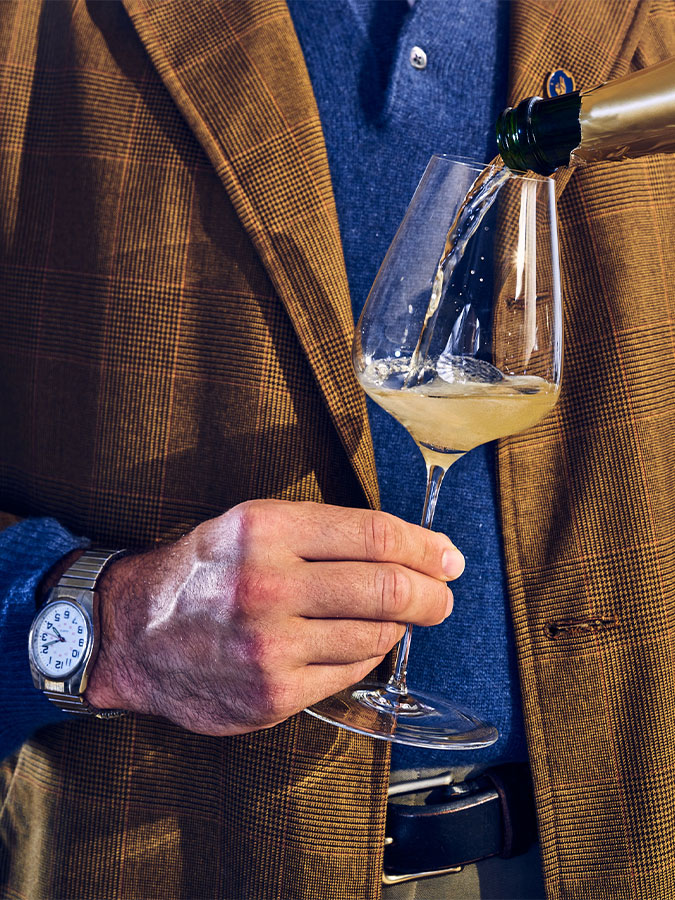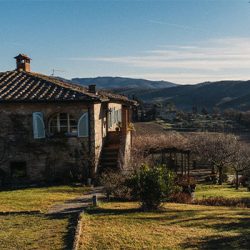

At four in the afternoon, Vancouver time, we found a table in the bar at Hawksworth. No reservations were available for the evening, so we came to check out the wine list. I was hoping to drink something local, one of the hand-crafted white wines from the Similkameen Valley, three hours east of town. Nadia Fournier, my friend from Montreal, pointed to a sparkling wine from Nova Scotia (a 58-hour drive from Vancouver, and much closer to home). She thought I’d want to know about the producer so we ordered a bottle. It left a vivid impression, and sparked a curiosity I wanted to share with sparkling-wine friends here in the states. Seven years later, 20 of our top tasters in the New York trade had not yet tasted Benjamin Bridge. Many knew La Garagista’s wines from Vermont, and the three Finger Lakes producers whose wines we had gathered to discuss site expression in North American sparkling wine. After we worked our way through Washington, Oregon and California’s North Coast, the Nova Scotia wine was still a point of fascination.
As climate change brings a renaissance of sparkling wine to the Northeast, a warming climate is also driving a cultural renaissance in the vineyards of Champagne. That’s how fin-tech guru Jane Gladstone described the creativity and energy of the region’s growers after a recent visit. She had gathered 20 of her friends at The Noortwyck, in NYC’s West Village, to introduce Benoît Déhu, the talented young grower from the western Marne Valley, and to share her excitement about his wines. Scott Handwerker, a lawyer and founder of the Société des Amis du Champagne, knew the wines and shared Gladstone’s enthusiasm. And Déhu’s own enthusiasm was as impressive as his wines, so we included them in one of our Champagne tastings, hidden among other Marne Valley growers, and they stood out there as well.
Oddly, sparkling wine is booming at a moment when celebrations might be challenged by war and climate disasters. In fact, the biggest boom may be in England’s southeast, where the chalk that has provided building blocks for churches and for sculptures carved into the hills now sustains vines. Tyler Colman traveled to Sussex to check in on the explosion of plantings, and the wines serving to slake some of the British thirst for Champagne in their post-Brexit world.
Climate change is also coming to California’s North Coast, and its impact on the wine industry’s economic engine that is Napa Valley has yet to be fully understood. As we assembled our cabernet tastings for this issue, David Darlington mentioned that he had heard from Leo McCloskey, one of the protagonists of his book, An Ideal Wine. McCloskey, founder of Enologix, had developed a following among cabernet producers for his lab services and consulting work. He had studied the chemistry of wines, particularly those earning high scores from certain critics, and advised customers interested in crafting their wines into critical darlings. McCloskey is now shifting gears. After several extended interviews, Darlington submitted McCloskey’s view on the future of winegrowing in Napa Valley.
To lend a Napa Valley winemaker’s perspective, we asked Elaine Chukan Brown to interview Dan Petroski. Now full-time at Massican, Petroski had grown cabernet at Larkmead for a decade, hosting salons in his spare time—including one discussion of climate change in Napa Valley that had included McCloskey as a panelist. Chukan Brown had attended the discussion and sat down with Petroski for his read on Napa Valley resilience.
While the two men do not necessarily agree on the future of cabernet in the face of warmer summers and more frequent extreme weather events, their perspectives do align on the potential for white wines. Not so long ago, the region was a major source of chenin blanc and riesling. Godello and verdejo may be on the horizon.
Joshua Greene is the editor and publisher of Wine & Spirits magazine.
This story appears in the print issue of Winter 2022.
Like what you read? Subscribe today.

















